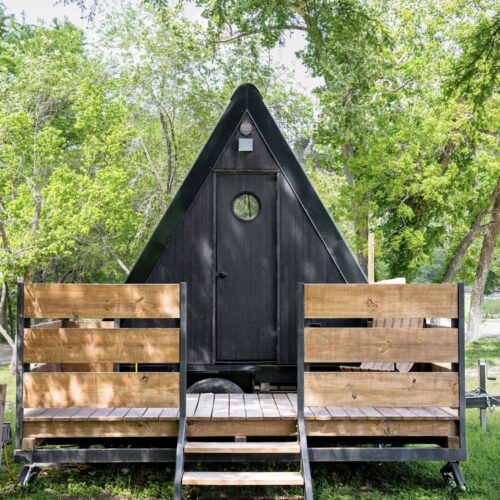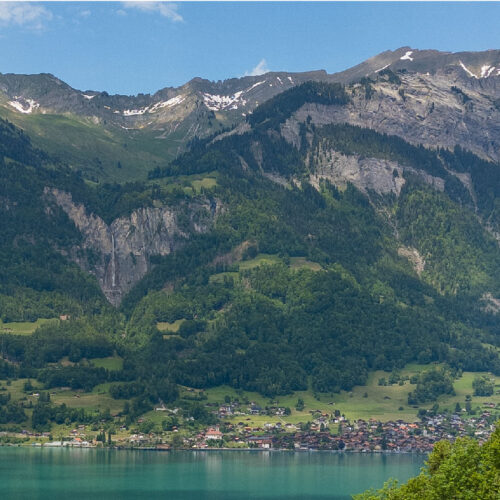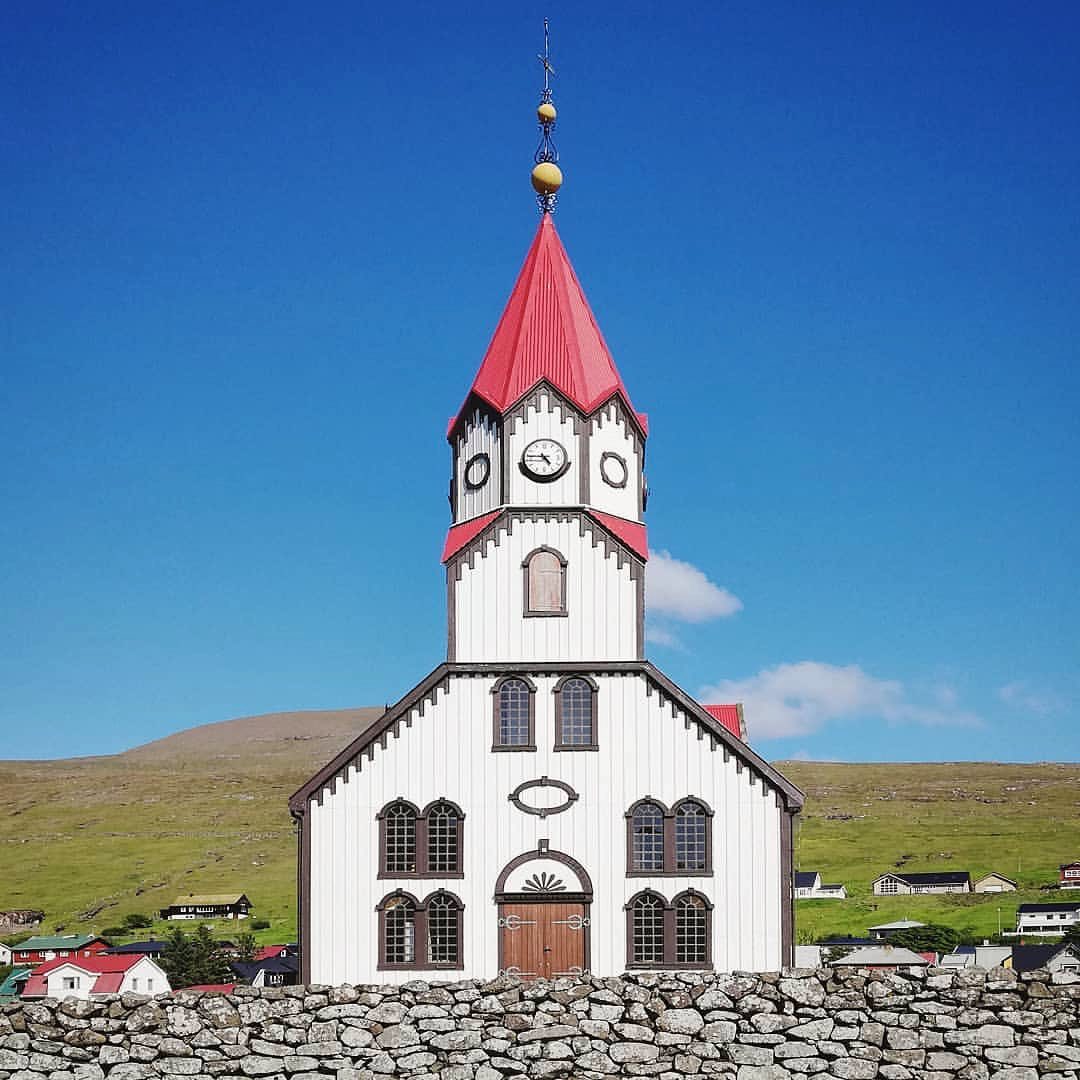Halfway between Norway and Iceland, under Denmark’s jurisdiction, lie the Faroe Islands, an archipelago of the North Atlantic. On these islands, almost 80% of Faroese people are members of the state church. Christianity first came to the islands as early as 849 in the form of Celtic Christianity, as evidenced by rune-stones across the island, including one near Sandavágur Church.
Sandavágur Church stands out for its distinctive red roof. The fifth in a series of churches built over the last 300 years, it is the oldest Faroese church that was both built and designed by Faroe Islanders. Designed by architect Magnus Jacobsen with a color scheme by Petur Alberg, the Church was constructed during World War I and completed in April of 1917.
The interior displays seven small paintings along the back wall; and an altarpiece estimated to be 150 years old also hangs in the Church. Perhaps the Church’s most notable piece is a rune-stone dating back to the 13th century.
Bearing an inscription carved on its surface, the rune-stone reads that the Norwegian Viking Torkil Onundarson from Rogaland was the first settler in the area. Other excavations in the town have revealed ruins from the Middle Ages, and the city boasts a rich history with legends of kings and witches found in its local lore.
Sandavágur itself is also distinguished among the towns of the Faroe Islands. Situated on the island of Vagar. It is the most famous village in the country, and has been recognized for its appearance and tourism. The name Sandavágur means “sandy bay” and refers to the sandy beach inlet near the village.
 62.054031, -7.151354
62.054031, -7.151354



























Know more? Share with the community!
Submit Your ImageLogin/Sign Up.